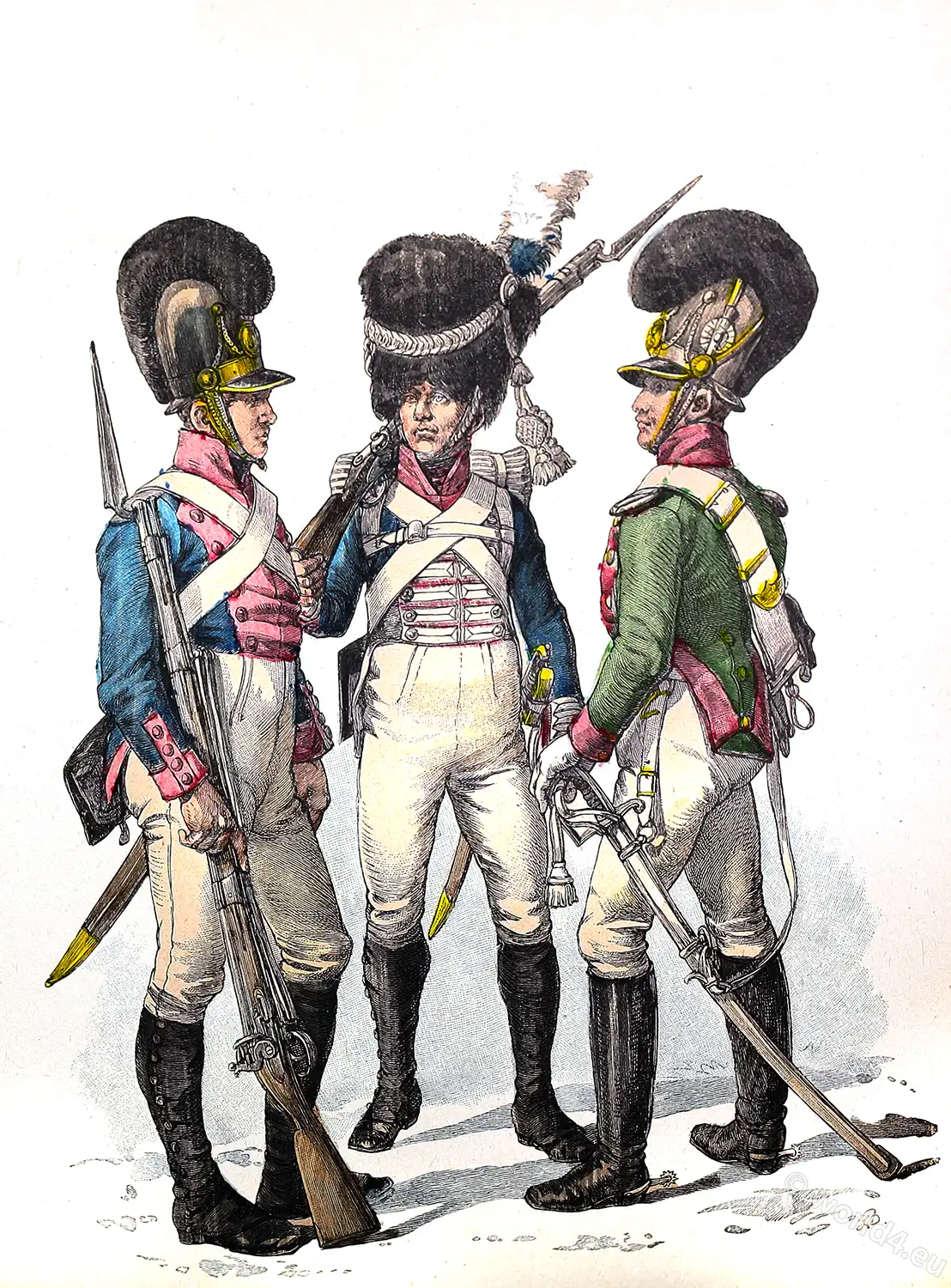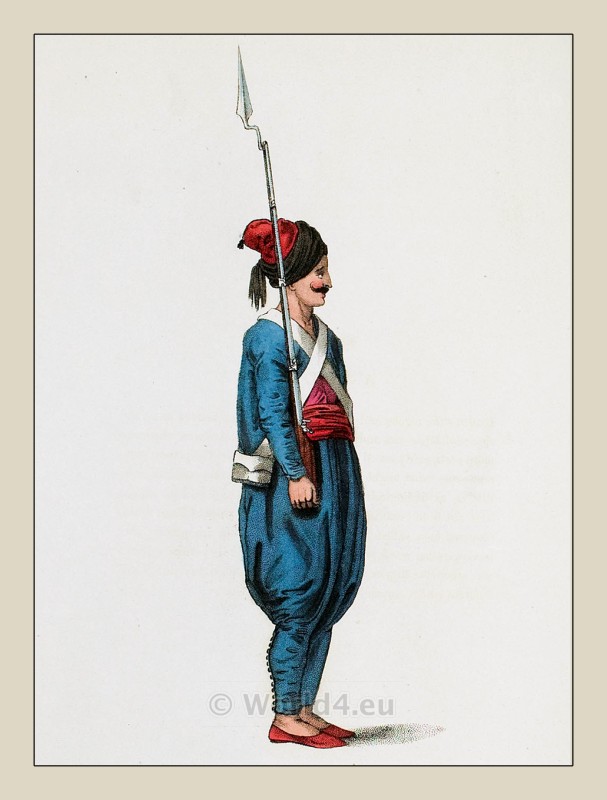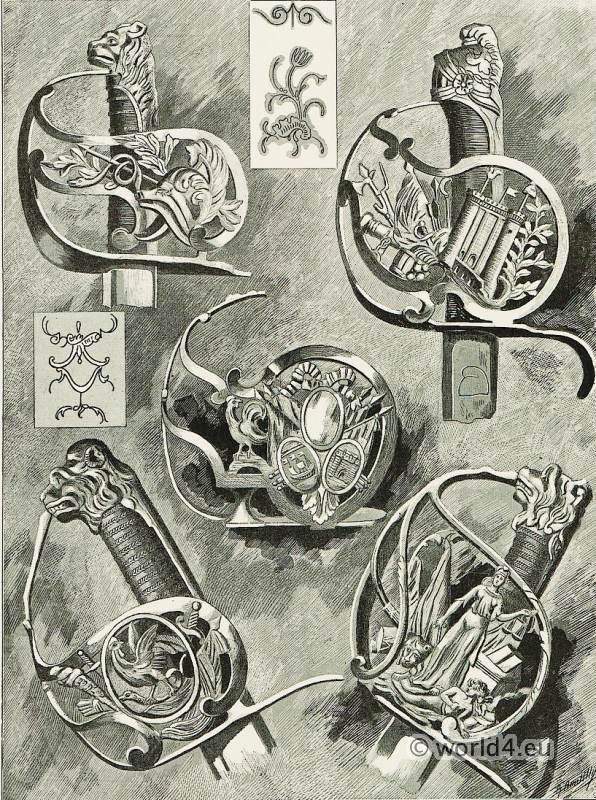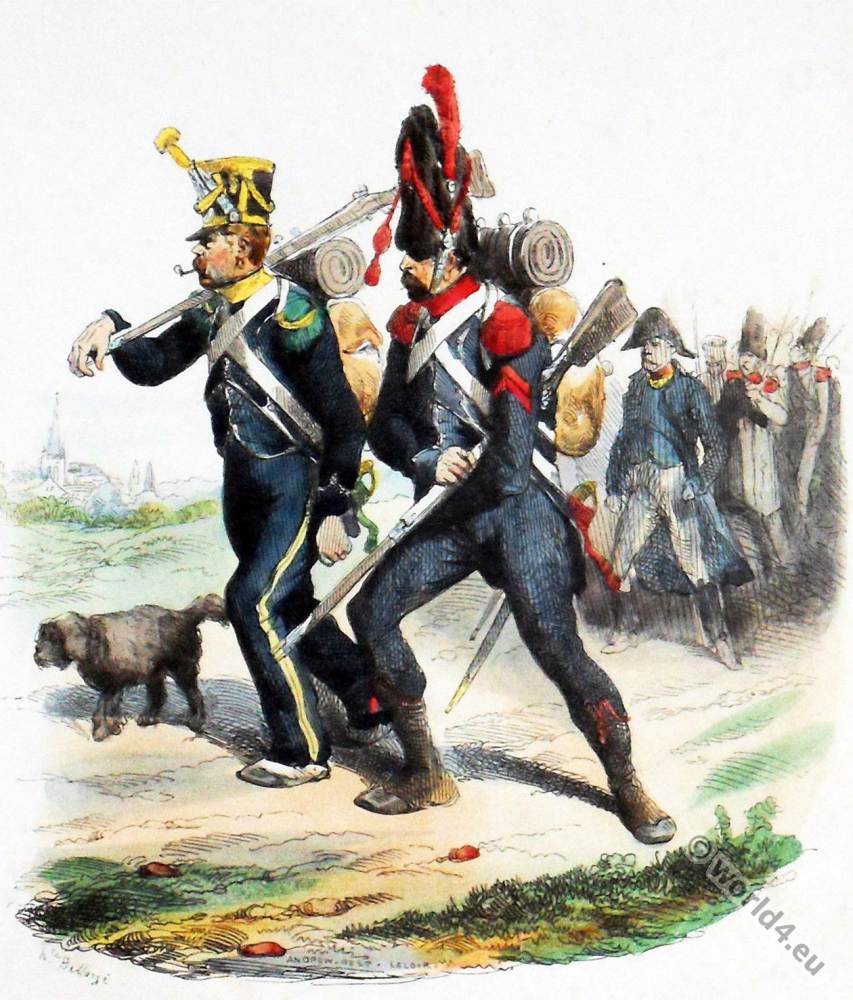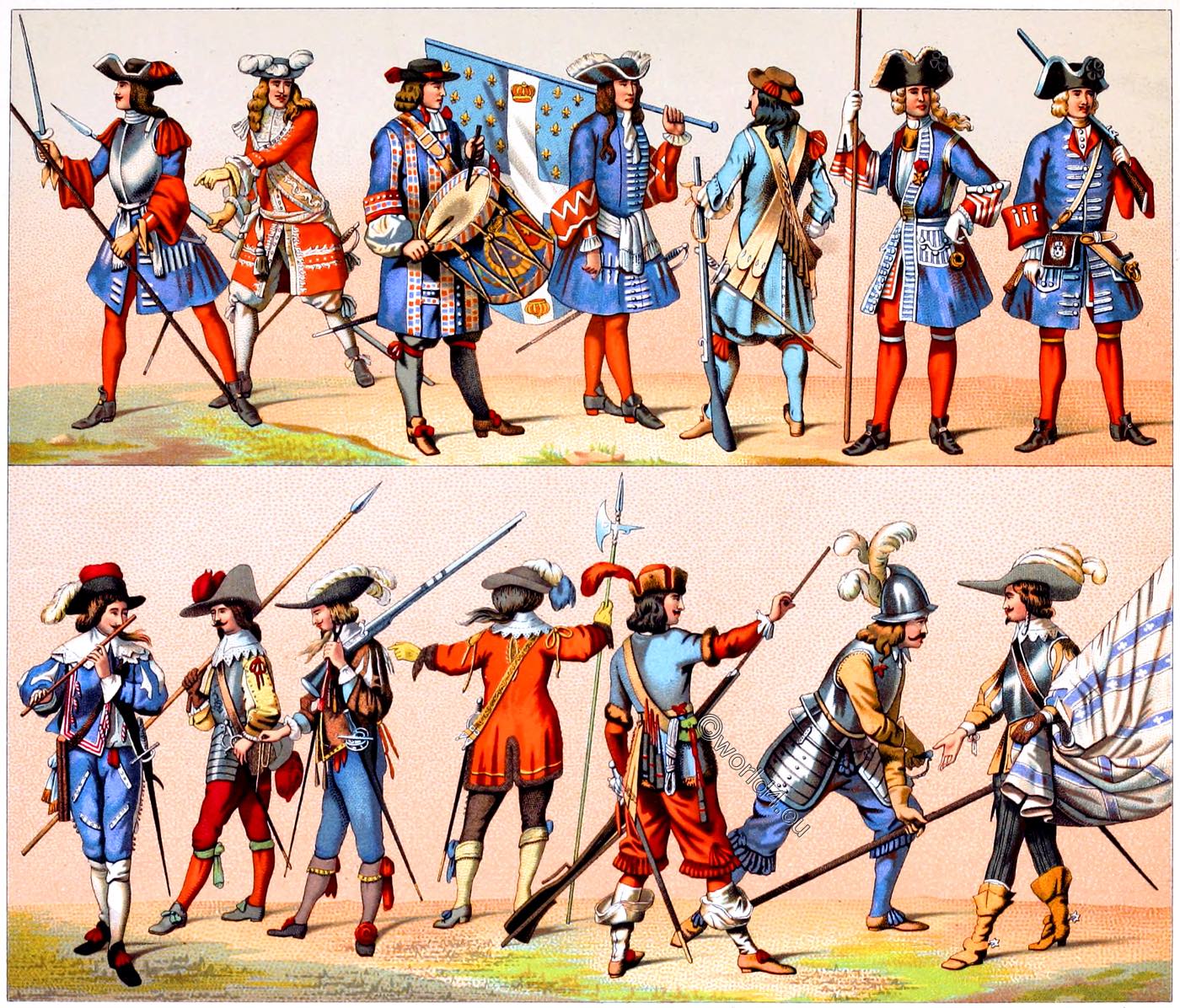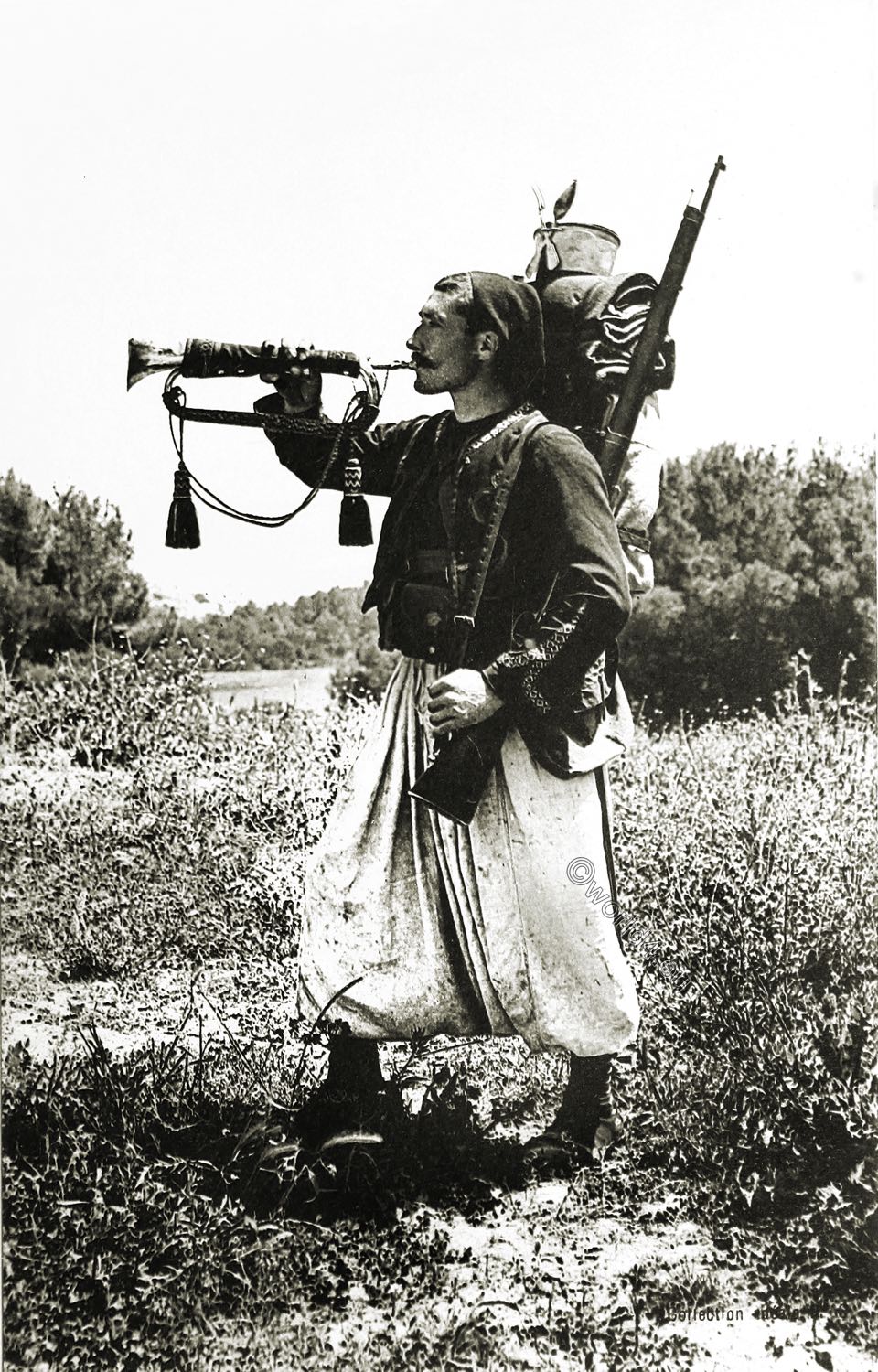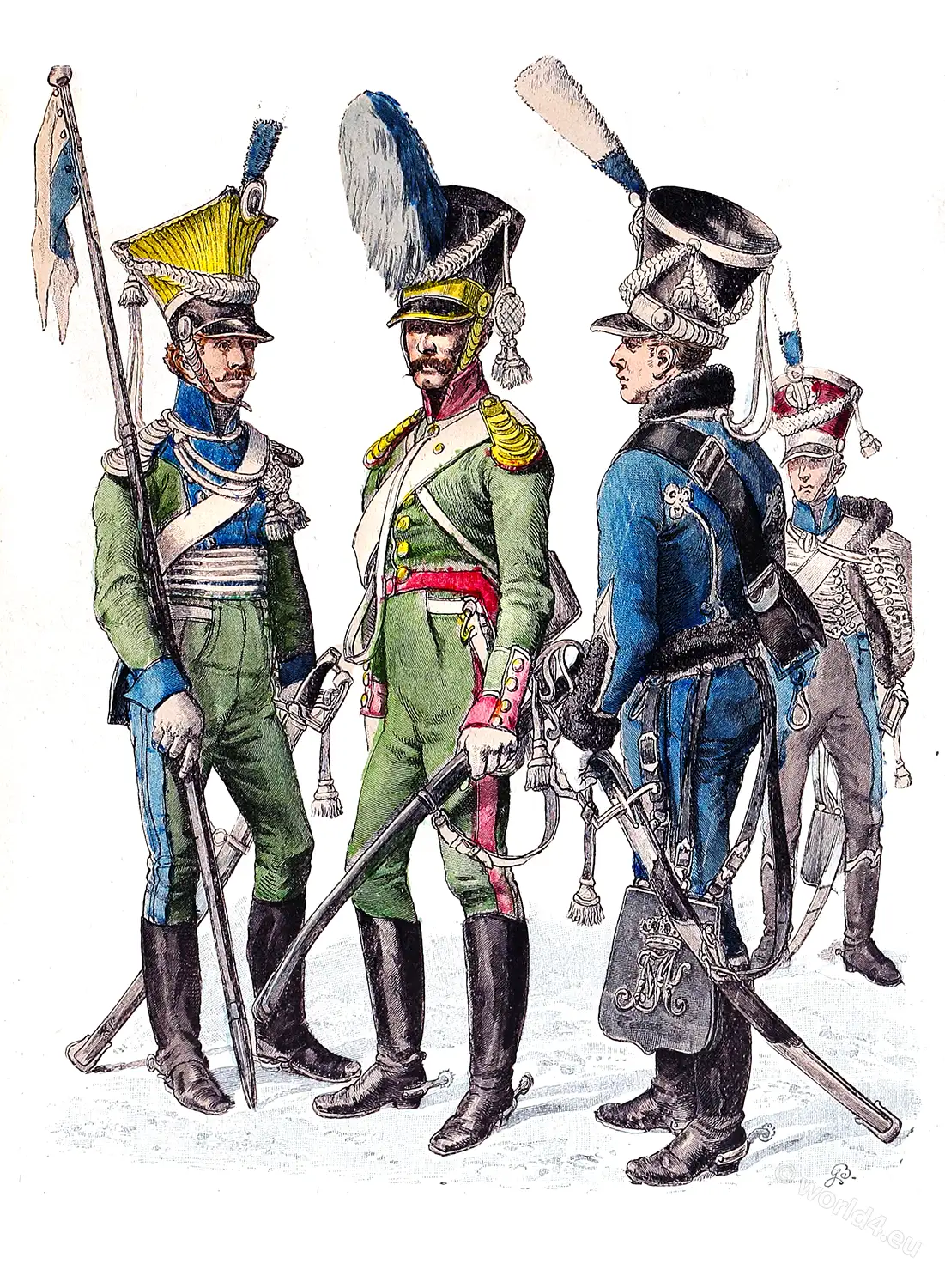On the history of costumes. Seventy-fifth sheet. XIXth century. Bavarian military. Münchener Bilderbogen No. 1004. Illustration by L. Braun.
Bavarian military uniforms at the time of the Napoleonic Wars (Coalition Wars).
Infantry Regiment (1814-1825)
Grenadier Guard Regiment (1812-1815)
Chevauleger (1805-1812) *)
*) In 1790, Bavaria established chevaulegers. In 1811, the entire cavalry in the Bavarian Army was converted into chevaulegers, who temporarily took over all cavalry tasks (small-scale warfare, reconnaissance, security, massive deployment in battle) as a unit cavalry until 1813, when the army was reorganised after the Russian campaign, specialisation set in again.
Nevertheless, until the end of the First World War, the majority of the Bavarian cavalry consisted of chevaulegers, who were considered a typical Bavarian branch of arms and enjoyed considerable respect among the population. The armament consisted of sabres and carbines. Around 1890, as with the entire German cavalry, lances were also introduced.
Source: Münchener Bilderbogen 1848 to 1898. On the history of costumes. Published by Braun & Schneider. Royal court and university printing office of Dr. C. Wolf & Sohn in Munich.
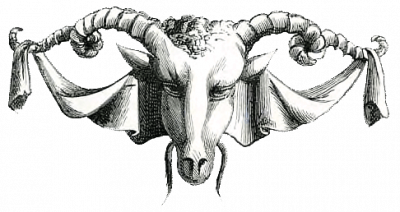
Discover more from World4 Costume Culture History
Subscribe to get the latest posts sent to your email.

